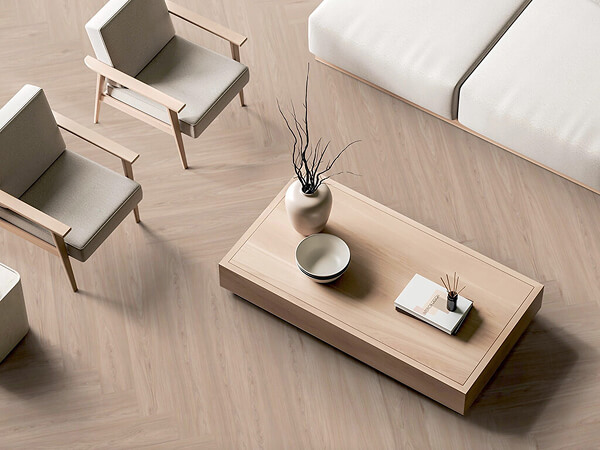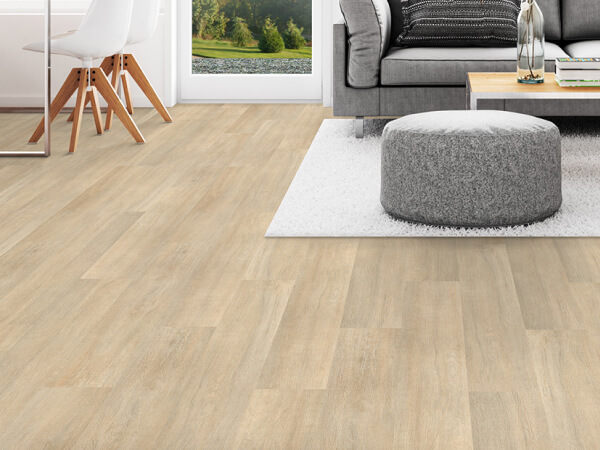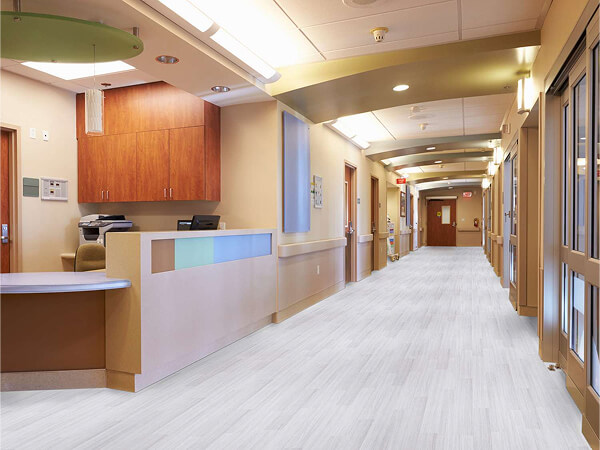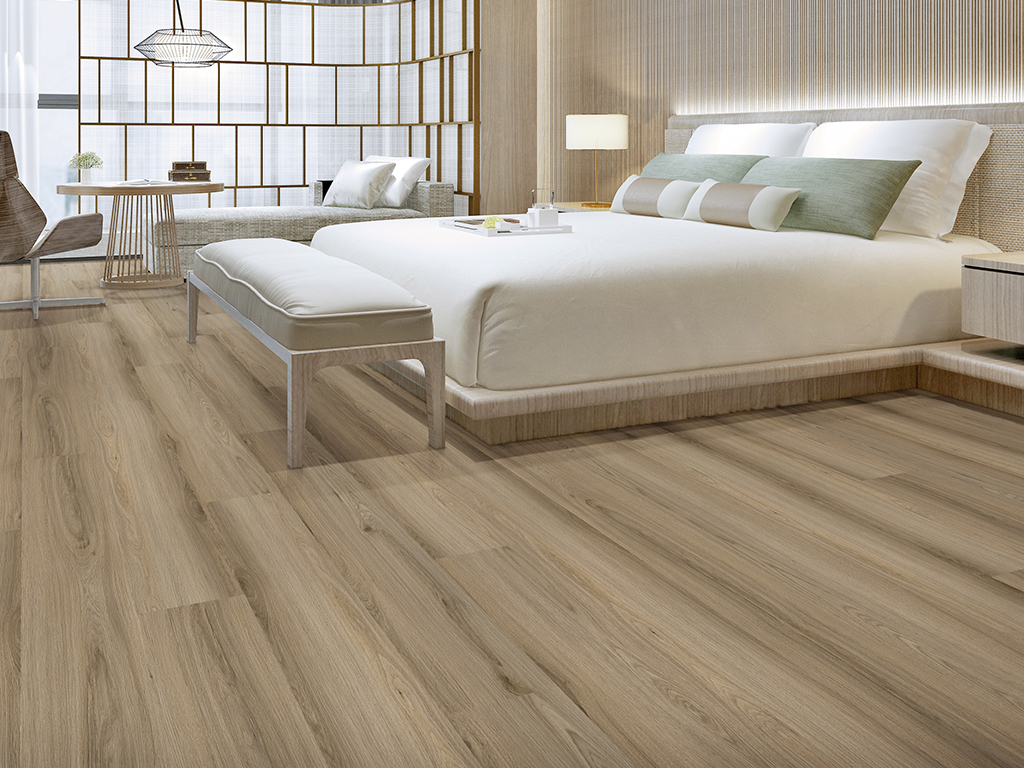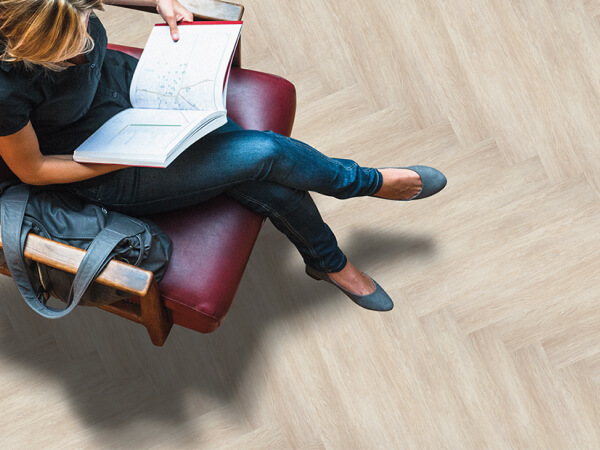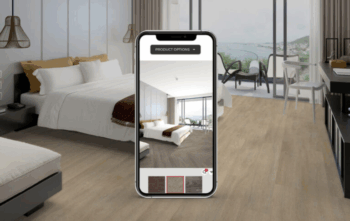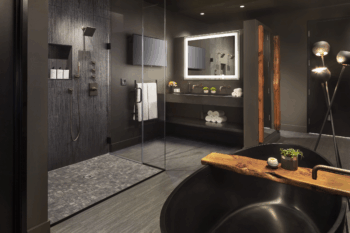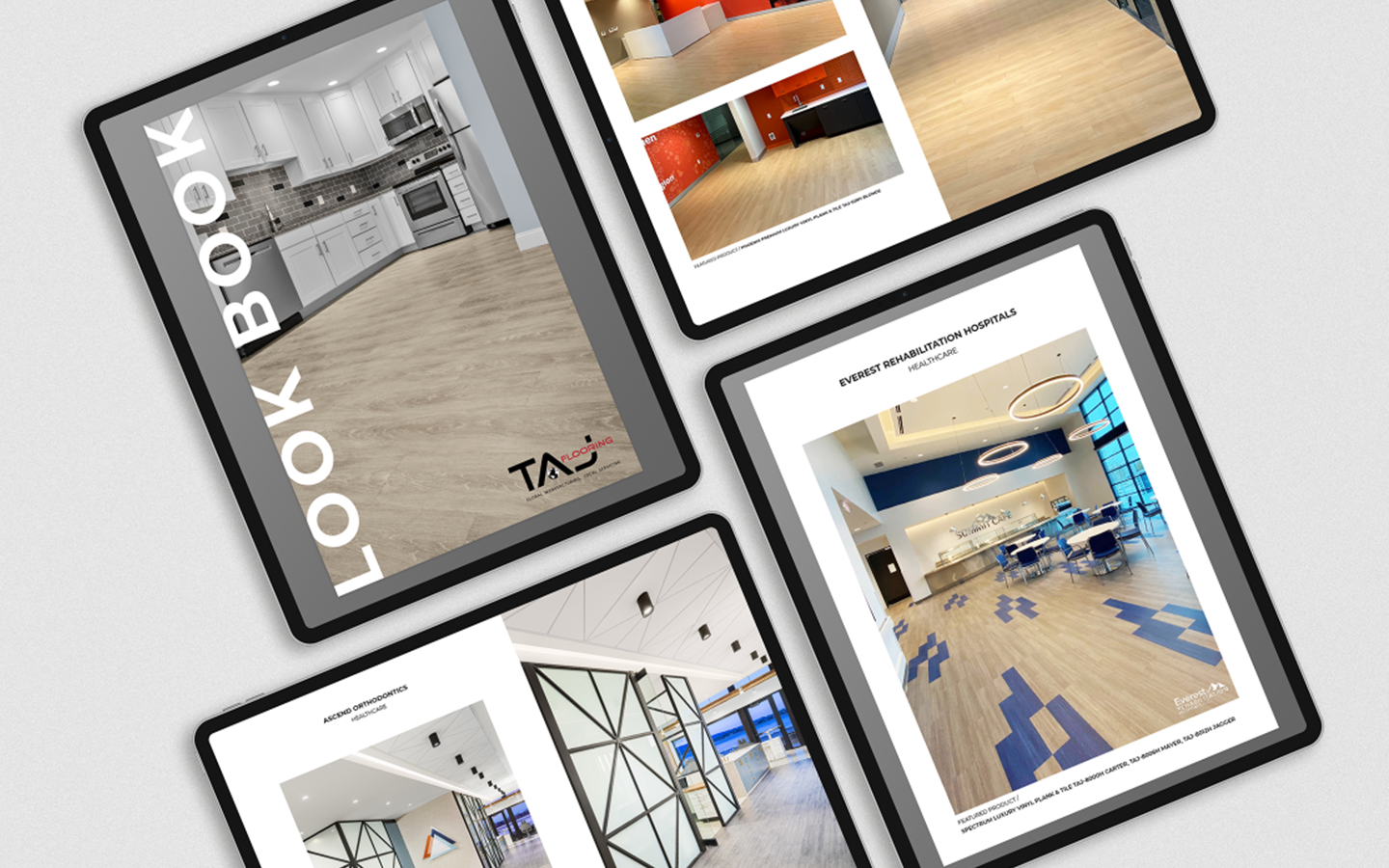6 Multifamily Interior Design Trends To Try in 2024
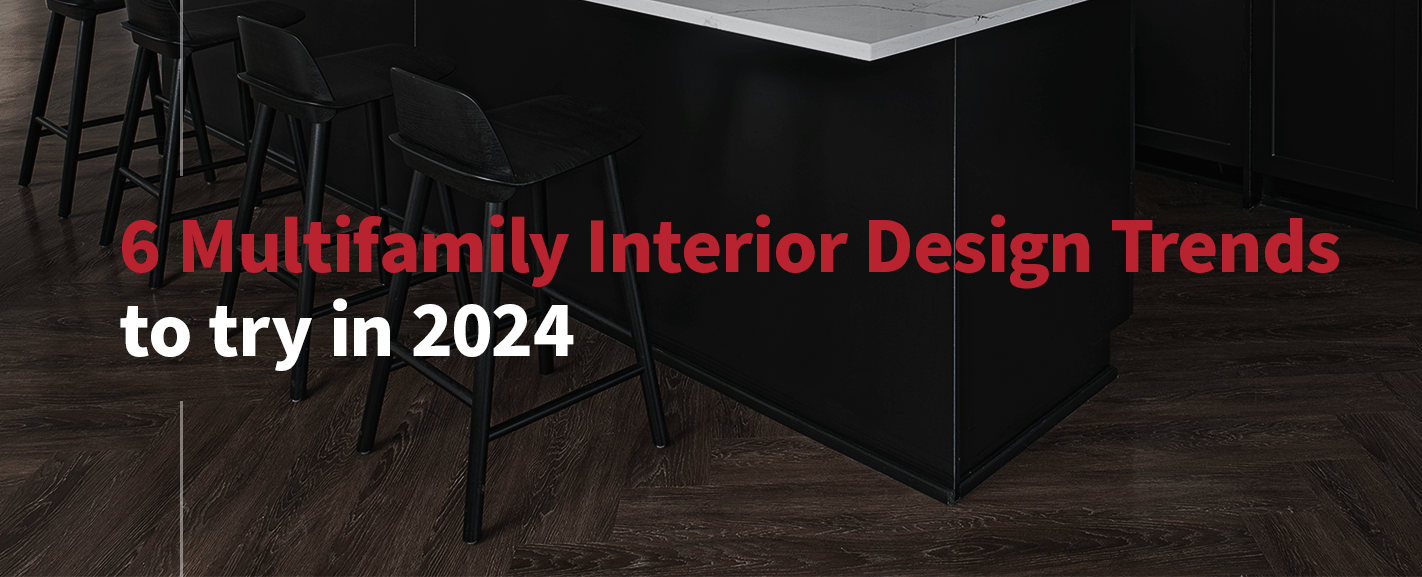
In the ever-evolving world of multifamily housing design, selecting the right flooring has become more than just a design choice — it’s a statement of function, style, and longevity. Luxury vinyl tile (LVT) stands out, offering designers a remarkable combination: the aesthetic appeal of classic materials like wood and stone, the durability to withstand high traffic, and the ease of maintenance that modern living demands. Moreover, its adaptability to various interior themes means it can seamlessly fit into everything from a traditional vintage-inspired ambiance to a contemporary urban loft.
This article dives into six distinct multifamily design trends for 2023, spotlighting the innovative ways LVT is being used to elevate the aesthetics and functionality of multifamily housing complexes.
- Open Floor Plans
- Biophilic Design
- Mixed-Use Spaces
- Co-Living Spaces
- Functional Flooring
- Sustainable Materials
1. Open Floor Plans
The allure of open floor plans is evident in their growing prominence across both multifamily complexes and commercial office spaces. These designs champion a sense of space, creating airy environments that encourage interaction and bathe interiors in natural light. Among the multitude of benefits they offer are:
- Increased natural light. By eliminating unnecessary walls and barriers, these multifamily designs usher in sunlight, making spaces feel larger and more welcoming.
- Improved social interaction. The open layout fosters a communal atmosphere, enabling residents or employees to connect and communicate with ease.
Within this spacious canvas, flooring becomes the artist’s brush stroke, defining and differentiating spaces. Luxury vinyl tile and plank flooring have become particularly sought-after choices for designers. Their decision to leverage LVT is driven by several compelling reasons, such as:
- Creating seamless visuals. LVT’s uniform design minimizes interruptions, delivering a fluid and cohesive look that anchors the open-plan aesthetic.
- Ensuring versatility. With its ability to convincingly mimic materials such as rich wood or elegant stone, LVT empowers designers with a diverse design palette.
- Facilitating easy transitions. Natural materials often present challenges due to varying thicknesses and heights. LVT, on the other hand, offers seamless transitions between areas, streamlining installation and reducing complexities.
The uniformity of LVT offers more than just aesthetic appeal, translating into tangible benefits for tenants. Whether it’s the gentle glide of an infant walker or the smooth roll of a vacuum cleaner, movement across the floor is uninterrupted, enhancing the practicality and pleasure of living in such spaces.
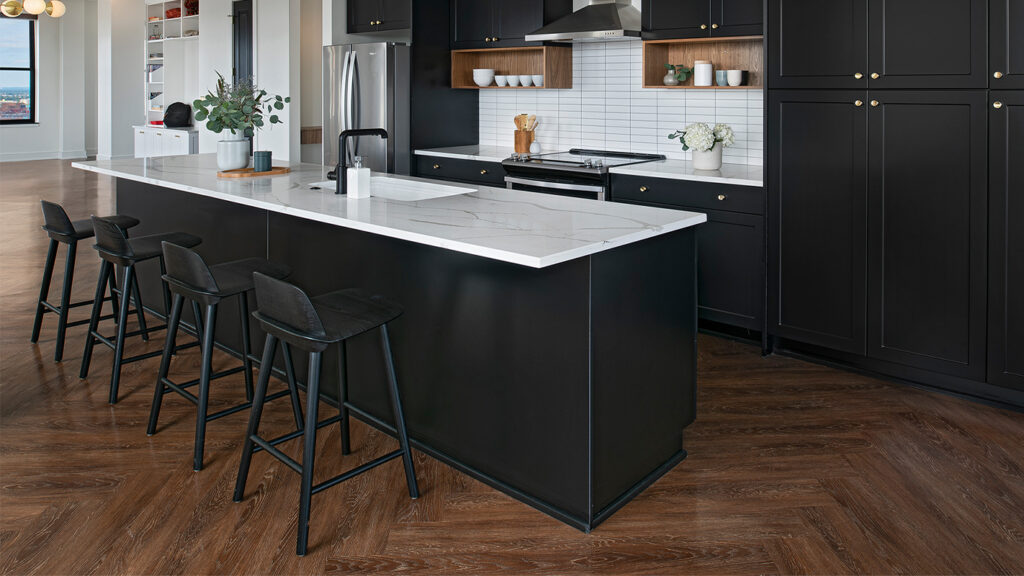
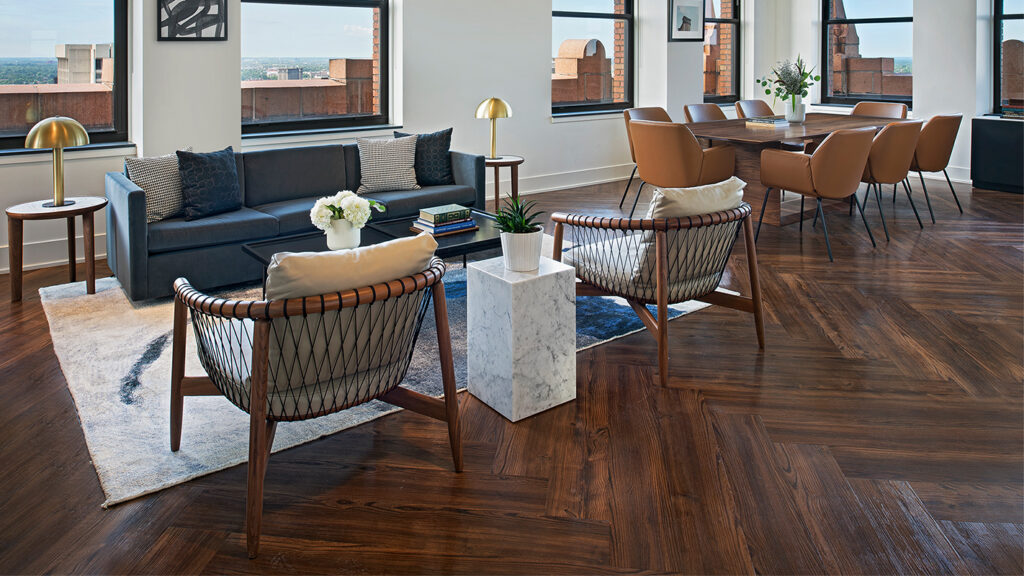
The Stott luxury apartments feature a custom luxury vinyl plank design in a rich dark brown tone placed in a herringbone pattern.
2. Biophilic Design
Biophilic design is more than an aesthetic choice; it’s an embrace of nature’s inherent beauty and its profound effects on the human psyche. This design philosophy, deeply rooted in our evolutionary connection to nature, recognizes the myriad benefits that come from intertwining our living spaces with elements of the natural world. Biophilic elements are a big part of recent multifamily design trends. Key advantages of this approach include:
- Mental clarity and well-being. Surrounding oneself with natural elements can reinvigorate the mind, promoting tranquility and clearer thinking.
- Stress reduction. The calming influence of nature-inspired designs can help mitigate the stresses of modern life, offering pockets of serenity.
- Enhanced creativity. The organic flow and unpredictability of nature can catalyze innovative thinking.
- Sense of community. Natural spaces are often communal, encouraging interactions, and strengthening social bonds.
In the context of biophilic design, flooring serves as a direct reflection of nature’s textures and hues. Luxury vinyl tile stands out for its uncanny ability to replicate the feel and visual appeal of natural materials. Here are a few of the ways LVT aids in biophilic design:
- Natural look and feel. With LVT, interiors can effortlessly mirror the textures of wood and stone, seamlessly connecting them to the outside environment.
- Earthy tones. Selecting hues inspired by forests, soils and minerals ensures that residents can enjoy natural colors even in urban settings.
- Optimal light interaction. Flooring materials that refract and complement natural light amplify the biophilic ambience, especially during the golden hours of sunrise and sunset.
While the visuals are undeniably compelling, the essence of biophilic design lies in its comprehensive wellness approach. Luxury vinyl tile further exemplifies this balance of form and function when it comes to:
- Physical comfort. Unlike many hard surfaces that can be unforgiving, LVT offers a softer, more accommodating surface for prolonged standing or walking. It’s also warmer underfoot than most hard surfaces.
- Ease of maintenance. The resilience of LVT makes it an ideal choice for spaces that require frequent cleaning, ensuring a consistently pristine environment.
- Enhanced acoustics. Advanced LVT options, such as 5MM thickness or modular acoustic variants, adeptly manage sound, creating peaceful interiors insulated from echoes and external noise.
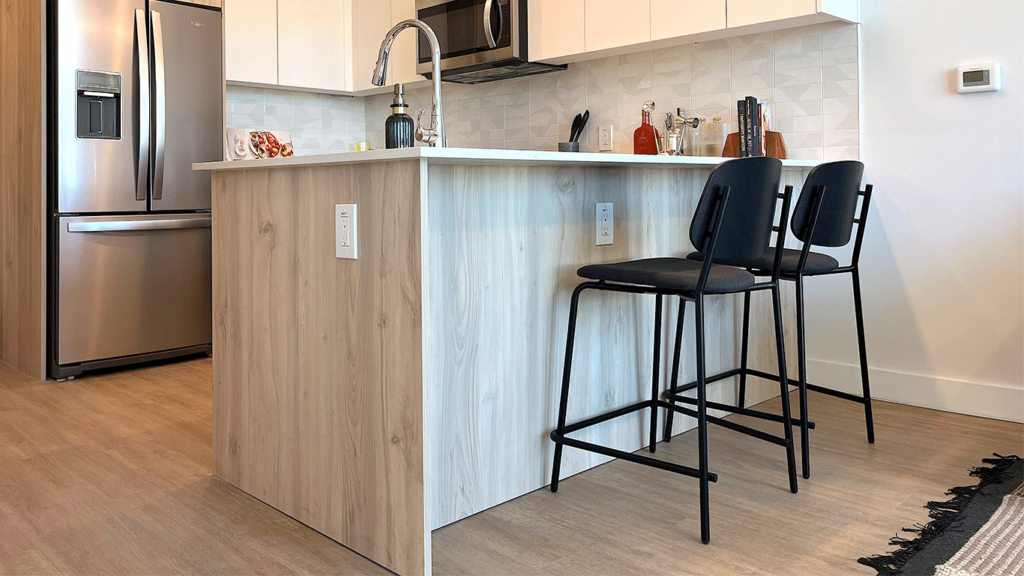
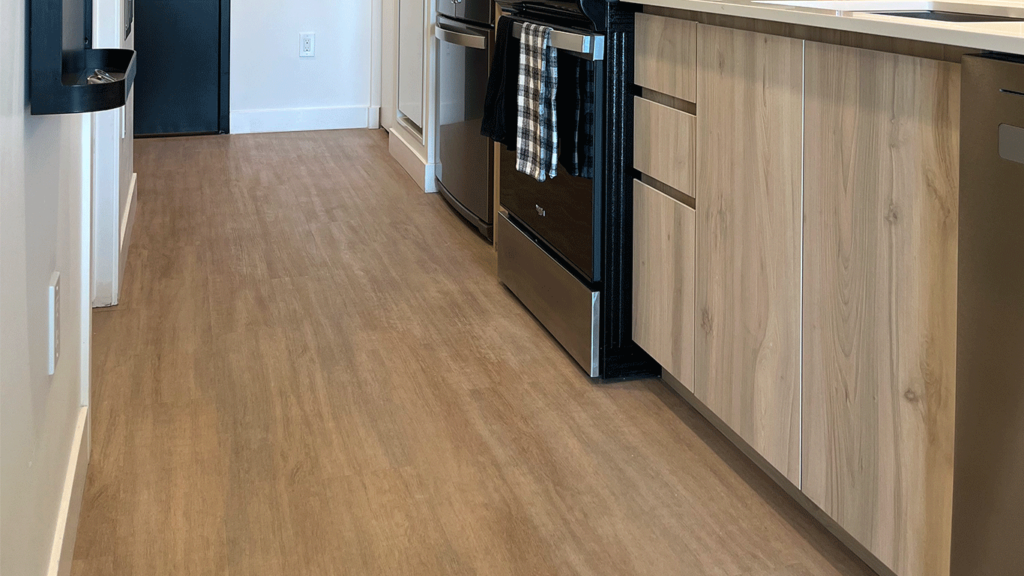
Featured Product: Wavelength Modular Acoustic Flooring 5mm Oat installed in Skye on 6th luxury apartments.
3. Mixed-Use Spaces
Mixed-use spaces are increasingly weaving their way into the fabric of modern urban development and multifamily design. These spaces, which meld residential units with commercial and retail areas, offer a contemporary approach to integrated living and working.
At the heart of this design movement is the concept of enhanced community. By combining housing with amenities, shops, and workspaces, mixed-use buildings foster a vibrant ecosystem where residents can live, work, and relax all within the same premises. This model not only amplifies the convenience factor by placing amenities just steps away from residential units but also offers businesses the unique advantage of a close-knit, accessible customer base.
LVT’s rise as a preferred flooring solution for multifamily complexes is no accident. Tailored for versatility, luxury vinyl tile champions both aesthetic appeal and functional design. Whether the aim is to carve out a sleek coworking space or craft a cozy cafe corner, LVT is up to the task. One of its standout features is the ability to utilize varying thicknesses:
- 3MM/5MM thickness options are often used for living spaces as well as commercial.
- 2MM is also intended for light commercial use/living spaces at a more affordable price point.
Another significant advantage of LVT is its consistent installation techniques. By eliminating the need for specialized installation methods across different zones, designers and developers can ensure a seamless flow between spaces, both in terms of design and functionality.
For a more in-depth look, our recent case study offers a fascinating exploration of how modular acoustic flooring was effectively used in a multifamily complex, blending residential coziness with the vibrant pulse of commercial activity.
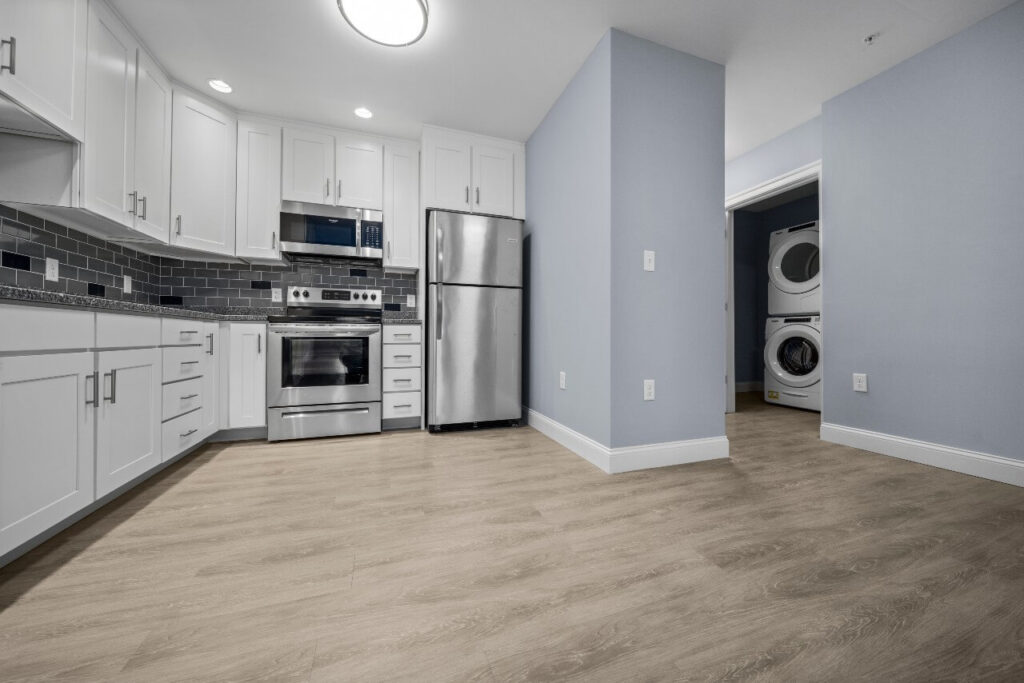
Featured Product: Wavelength Modular Acoustic Flooring 5mm Sharkskin featured in the spaces at Pointe Place.
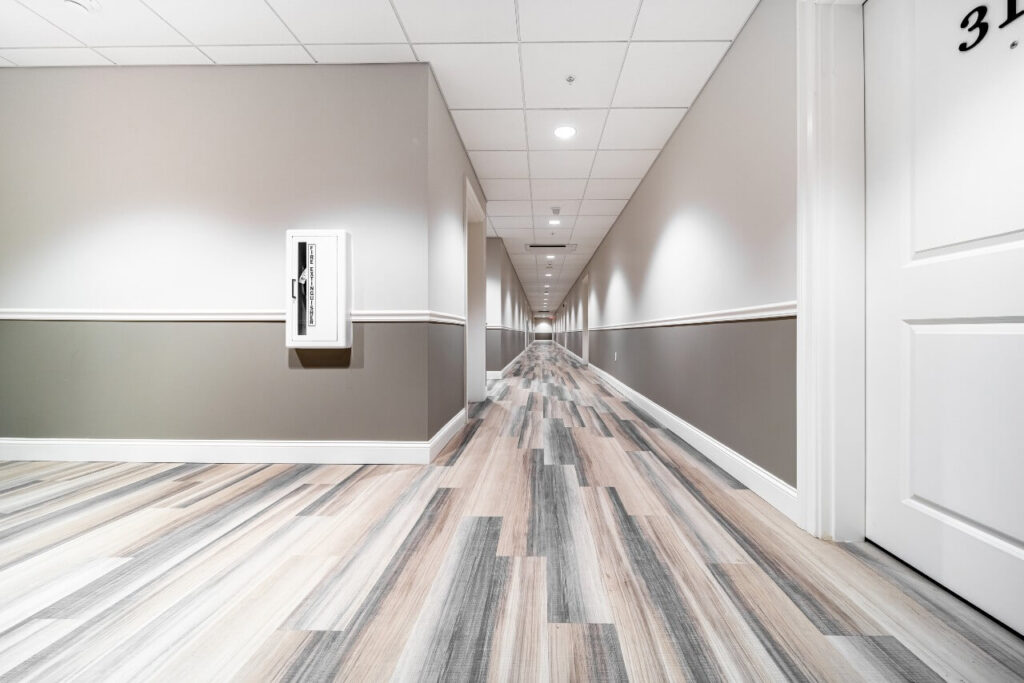
Featured Product: Color Infused Modular Acoustic Flooring 5mm Board Buff
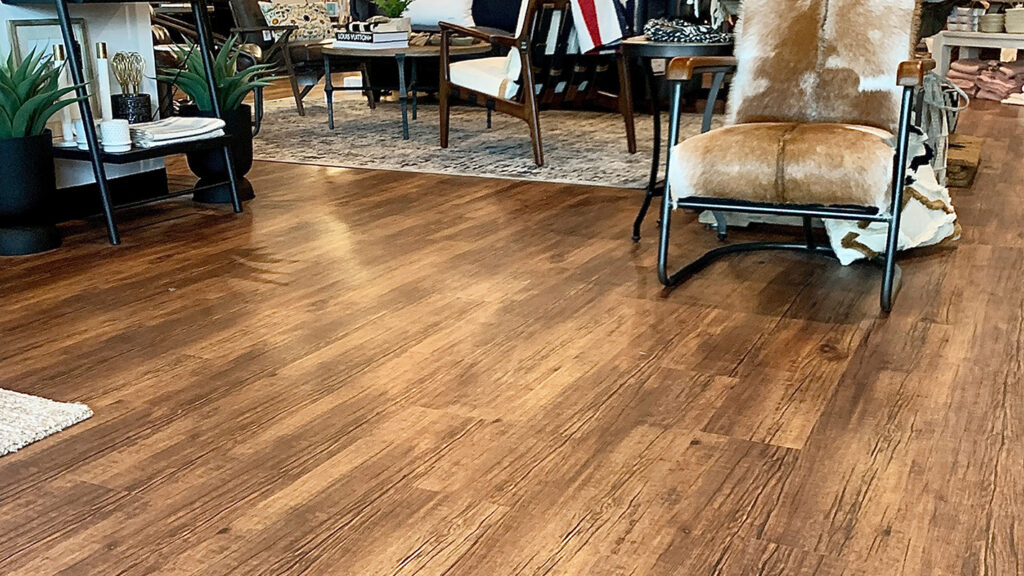
The three preceding photos are from the same multi-use complex, Pointe Place, illustrating how LVT can help to distinguish spaces of varying purposes. Featured Product: Select Luxury Vinyl Plank Mahogany.
4. Co-Living Spaces
Co-living is a reflection of changing societal norms and an evolving understanding of community. With roots that trace back to shared living arrangements, the modern co-living space has expanded to encompass a range of models including:
- Dormitories, common in educational settings, designed to bring students together
- Senior Living Facilities, tailored to provide community and care for older adults
- Co-ops, or shared housing, where responsibilities and benefits are jointly owned and managed
- Shared apartment complexes, modern apartments with shared facilities to foster community while providing individual private spaces
Given the community-centric design of co-living spaces, there’s a need for durable, long-lasting, and easily maintainable flooring. This is especially true in areas with busy foot traffic or where the turnover rate is high. Moreover, shared amenities, such as kitchens and bathrooms, introduce additional considerations.
Here’s where the advanced technology in LVT flooring comes into play:
- High moisture resistant adhesives. Essential for spaces with greater moisture levels, such as bathrooms and locker rooms. One notable product in this category is the TAJ U100 High Moisture Capable Wet Set Adhesive, specially designed for waterproof requirements.
- Ease of cleaning. Shared spaces tend to accumulate more wear and tear, necessitating flooring solutions that are not only durable, but easy to clean and maintain as well.
Luxury vinyl tile is an exemplary choice for co-living spaces within multifamily complexes. Its combination of cost-effectiveness, durability, and aesthetic appeal ensures shared spaces look inviting and retain their pristine condition over extended periods.
5. Functional Flooring
Elevating interiors beyond aesthetics, functional flooring — particularly luxury vinyl tile — is setting new standards in multifamily housing design. By combining visual appeal with practical utility, LVT is a transformative element in modern spaces.
Here’s a breakdown of the many benefits and applications of functional flooring:
- Heated flooring. Luxury vinyl tile can be seamlessly integrated with radiant heat systems, offering warmth and comfort especially appreciated in bathrooms.
- Sound insulation. A critical need in communal living spaces, it improves acoustics, makes spaces more habitable, and enhances tenant satisfaction. Sound-insulated flooring in common areas and shared workspaces ensures that noise transfer is minimized, offering residents a tranquil environment for relaxation or concentration.
Additionally, LVT offers functional support for amenities, such as:
- Fitness centers. LVT meets the unique demands of these spaces. It withstands wear from heavy foot traffic, supports heavy equipment, is moisture resistant, and offers cushioning suitable for activities like yoga.
- Communal lounges. Beyond acoustics, the easy-to-clean nature of LVT keeps these spaces hygienic and ready for varied activities, from casual to formal.
Optimizing the functional aspects of flooring for each amenity enables property developers and designers to ensure utility and significantly boost the overall resident experience.
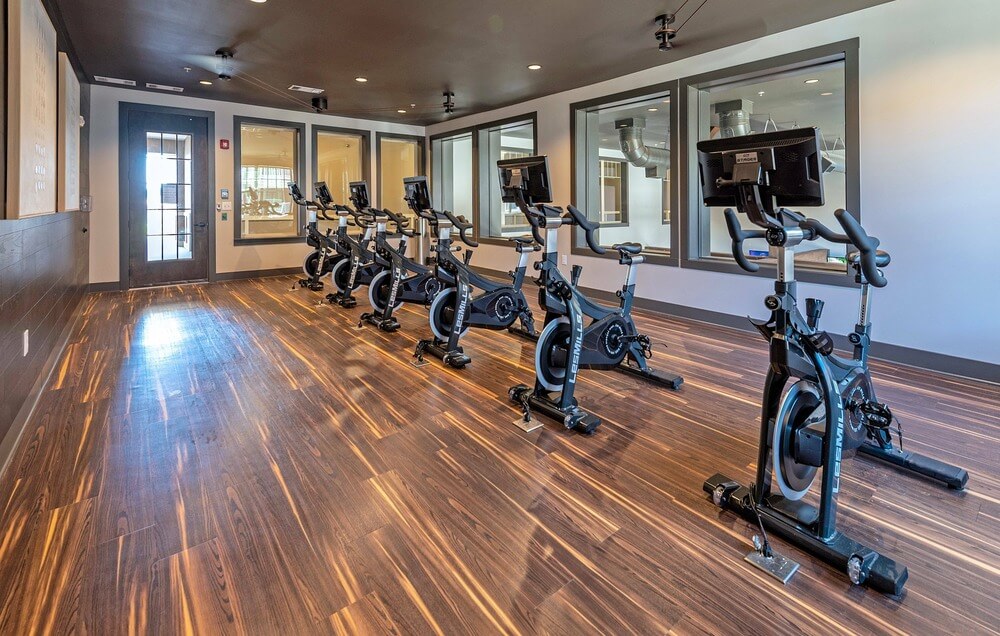
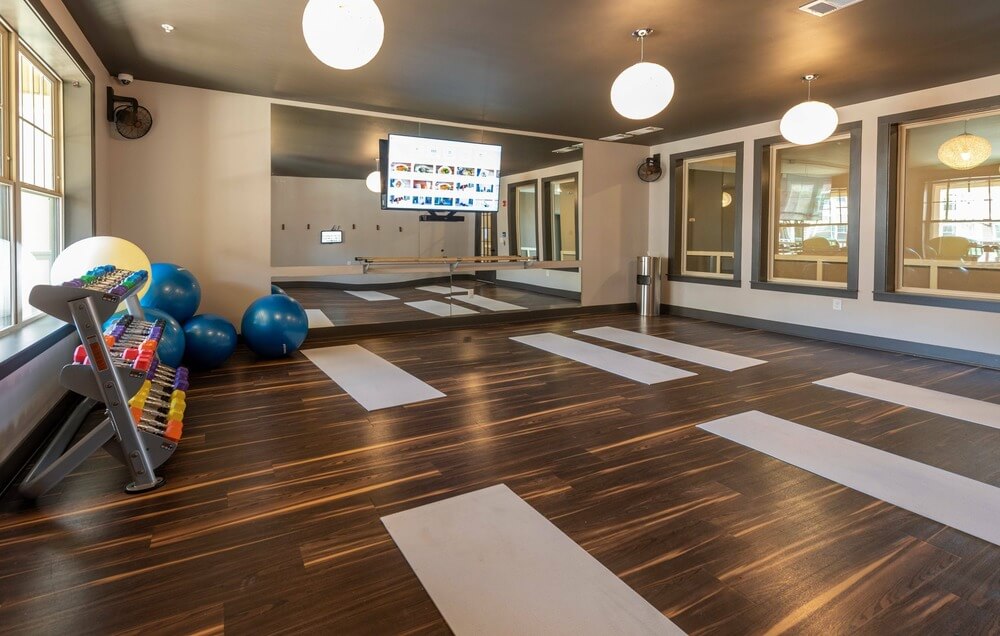
Featured Prouct: Phoenix Premium Luxury Plank (28mil wear layer) Yakisugi installed in the fitness areas at Legacy at Jones Park.
6. Sustainable Materials
One of the largest trends in multifamily housing design evolution is the growing demand for sustainable flooring. Sustainable materials provide a number of benefits that, taken together, can ensure the floor’s longevity and cost-effectiveness.
Sustainable flooring is durable and able to withstand heavy foot traffic, daily wear and tear, scratches, indentations, and stains, which make it especially ideal for multifamily complexes. It is a great option for high-traffic areas like hallways, common areas, and entryways, and its relative ease of maintenance is important for multifamily spaces that receive high turnover of residents (and don’t forget the pets, too!).
Sustainable flooring materials are easy to clean and resistant to moisture, which means they can last for a long time while still looking great. A reduced need for maintenance and repairs saves money and time in the long run. And that is something we can certainly get behind.
Trends in Multifamily Interior Design
The multifamily design space is undergoing significant changes, shaped by evolving preferences and the integration of innovative design concepts. Central to this transformation is the role of LVT flooring.
With the rise of biophilic design, the allure of open floor plans, and the value-driven approach of mixed-use and co-living spaces, the significance of the right flooring cannot be understated. Luxury vinyl tile is a top choice due to its resilience and adaptability, meeting both the aesthetic and practical demands of modern complexes.
When planning the design of multifamily complexes, making informed flooring decisions is not just about aesthetics — it’s a commitment to enhancing the quality and efficiency of shared living spaces.
Contact the TAJ Flooring team today to talk about all the flooring options for a multifamily housing design project.

